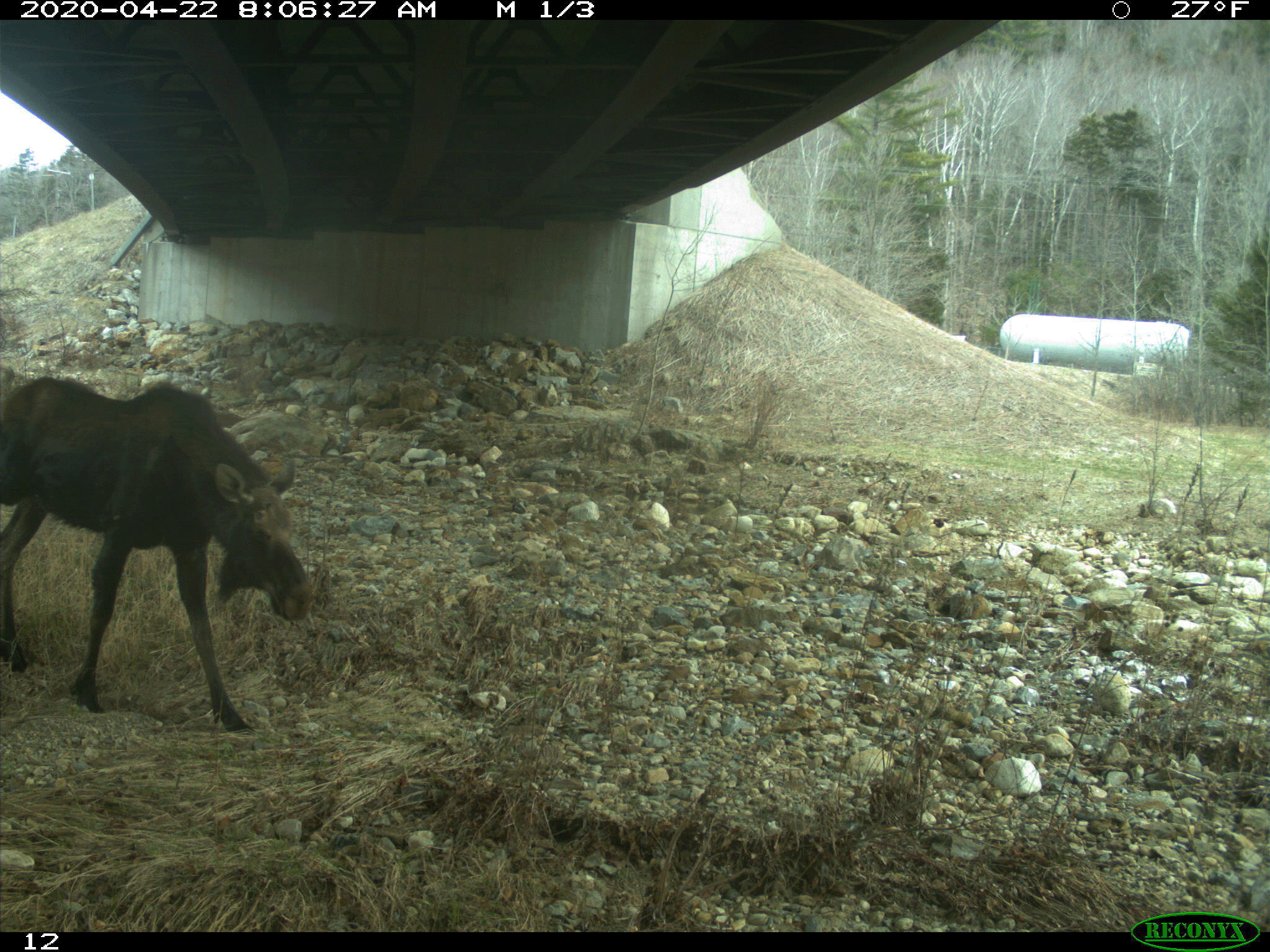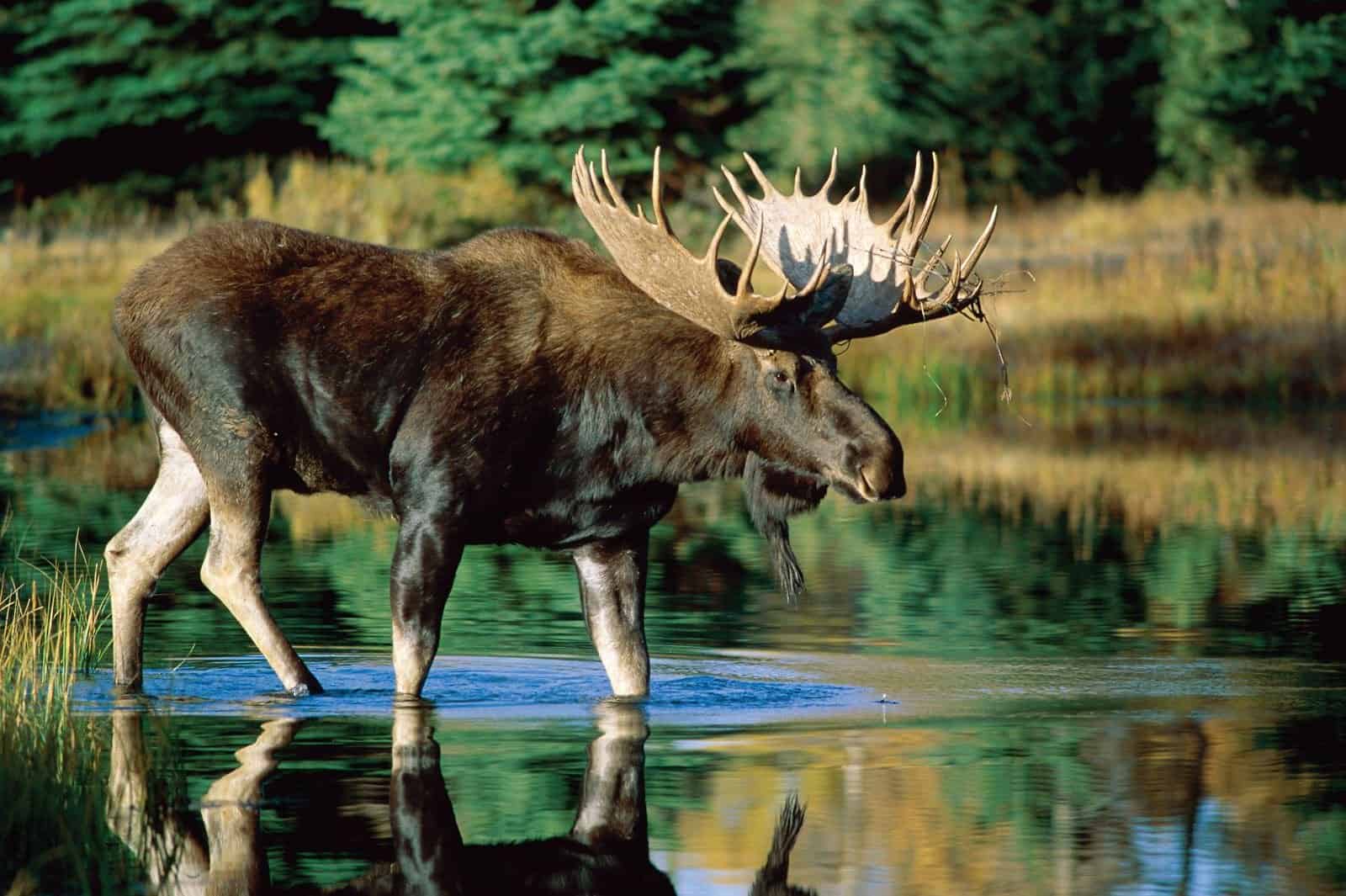Moose are commonly found in states like Alaska, Maine, Colorado, Wyoming, and Montana. These states provide suitable habitats for moose due to their forests and cool climates.
Moose are majestic mammals that thrive in these regions, drawing wildlife enthusiasts and photographers to witness their beauty. From the dense forests of Alaska to the rugged terrain of Colorado, moose populations are spread across various states in the U.
S. While they can be elusive creatures, their sheer size and impressive antlers make them a fascinating sight in the wild. Let’s explore the diverse landscapes where moose roam and learn more about these fascinating animals.

Credit: www.ebay.com
Moose Habitat
The Moose habitat plays a crucial role in determining where these majestic creatures are found. Moose are primarily Forest Dwellers and are commonly found in regions with Preferential Climates.
Forest Dwellers
Moose are mostly found in areas with dense vegetation and ample forage, such as forests and wooded areas.
Preferential Climates
Moose inhabit regions with cold weather and abundant foliage, favoring cooler temperatures for survival.

Credit: www.nationalgeographic.com
Geographical Distribution
Moose primarily inhabit the northern United States, including Alaska, Maine, Montana, Wyoming, and Minnesota. They are also found in parts of the northeastern and western regions. Moose typically gravitate towards forested areas, where they can find the food and shelter they need to thrive.
North America Moose Habitat
North American moose primarily inhabit northern regions in the United States and Canada, thriving in forested areas with access to water sources.European Moose Habitat
European moose are commonly found in the northern parts of Europe, favoring coniferous forests and wetland areas for their habitats.Moose Population
Moose can be found in states like Alaska, Maine, and Minnesota, where they thrive in forested areas. These majestic creatures are a significant part of the wildlife in these regions, contributing to the diverse ecosystem.
Varying Populations
Moose populations are primarily found in northern regions of North America, including Alaska, Maine, Minnesota, and Wyoming. However, their numbers can vary greatly within these states due to habitat and climate conditions.
Threats To Moose
Threats to the moose population include habitat loss, climate change, and predation. Additionally, parasites and diseases have led to declines in some areas, impacting moose numbers. These factors require close monitoring and conservation efforts to preserve this iconic species.
Human-moose Interactions
One of the most fascinating aspects of moose is their interaction with humans. These encounters can range from awe-inspiring to potentially dangerous. Understanding these human-moose interactions is crucial for both preservation efforts and for those who live in areas where moose populations thrive. Let’s explore some of the key elements that shape the relationship between humans and moose.
Conservation Efforts
In order to ensure the peaceful coexistence of humans and moose, various conservation efforts have been put in place. These initiatives are aimed at protecting the habitat of moose, as well as minimizing conflicts between humans and these magnificent creatures.
Moose-watch Tourism
Another interesting aspect of human-moose interactions is moose-watch tourism. Moose-watching has become a popular recreational activity in regions where moose populations are concentrated. Tourists and nature enthusiasts flock to these areas in hopes of catching a glimpse of these majestic animals in their natural habitat.
Communities and businesses have capitalized on this interest by offering guided moose-watching tours and organizing special events centered around moose. This form of tourism not only supports the local economy but also raises awareness about the importance of moose conservation.
Moose-Watch Tourism:
| Benefits | Challenges |
|---|---|
| Moose-watching boosts local economy through tourism revenue. | Overzealous tourists may disrupt moose behavior and cause stress. |
| Increased awareness about moose conservation and environmental stewardship. | Heavy tourism traffic can disturb moose habitats. |
| Creates job opportunities for local guides and wildlife experts. | Unregulated and irresponsible tourism practices may have negative impacts on moose populations. |
By balancing the economic benefits of moose-watching with responsible tourism practices, communities can foster positive human-moose interactions while preserving the well-being of these remarkable creatures.
Moose Adaptations
Moose are fascinating creatures that have evolved various adaptations to survive in their natural habitats. These adaptations include both physical attributes and behavioral characteristics that help them thrive in different environments. In this section, we will explore the specific adaptations that enable moose to navigate their surroundings effectively.
Physical Attributes
Moose possess several physical attributes that contribute to their survival. One of the most distinguishable features is their massive size. Adult males, also known as bulls, can weigh up to 1,500 pounds and stand over six feet tall at the shoulder. This size provides them with a significant advantage against predators and allows them to intimidate potential threats.
Another crucial physical adaptation is the moose’s long legs. These limbs are perfectly suited for traversing through wetlands and thick vegetation, which are often part of their natural habitats. The elongated legs help moose maintain stability and reach higher vegetation, such as the leaves and branches of trees.
In addition, moose have a unique, elongated nose called a snout. This snout allows them to efficiently browse for food, even underwater. Moose are excellent swimmers, and their elongated nasal passages enable them to take in oxygen while remaining submerged.
Behavioral Characteristics
Along with their physical adaptations, moose possess behavioral characteristics that enhance their survival. One such adaptation is their ability to migrate over long distances. Moose are known to travel significant distances in search of food and to avoid harsh weather conditions. This behavior ensures their access to sufficient resources all year round.
Moose are also highly adaptable feeders. While they primarily consume vegetation such as twigs, leaves, and aquatic plants, they can adjust their diet based on what is available. This flexibility allows them to survive in a wide range of habitats, from forests to wetlands.
Furthermore, moose exhibit a remarkable territorial behavior during the breeding season. Bulls actively establish and defend their territories against competing males. This behavior ensures exclusive access to females and increases their chances of successful reproduction.
In conclusion, moose have developed an array of adaptations to thrive in their respective environments. From their physical attributes, such as their size, long legs, and elongated nose, to their behavioral characteristics, such as migration and territorial behavior, these adaptations contribute to their survival and success as a species.

Credit: www.vermontpublic.org
Frequently Asked Questions On What States Do Moose Live In
What States Do Moose Live In?
Moose can be found in many states across North America, including Alaska, Maine, Massachusetts, Michigan, Minnesota, Montana, New Hampshire, New York, Vermont, Washington, and Wyoming. These states offer suitable habitats for moose, with ample vegetation and freshwater sources for them to thrive.
Conclusion
Moose predominantly inhabit the northern parts of the United States, such as Alaska, Maine, Montana, and Minnesota. Understanding the states where moose live is crucial for conservation efforts and wildlife enthusiasts. By recognizing their habitat, we can better protect and appreciate these majestic creatures in their natural environment.



